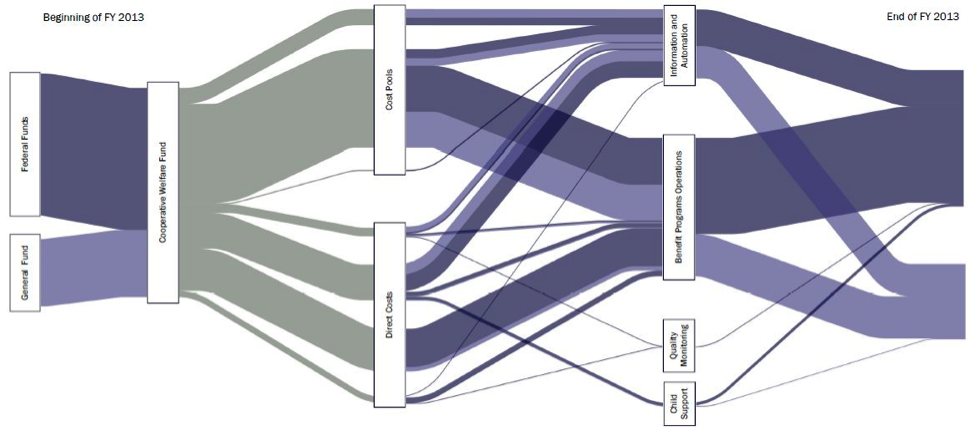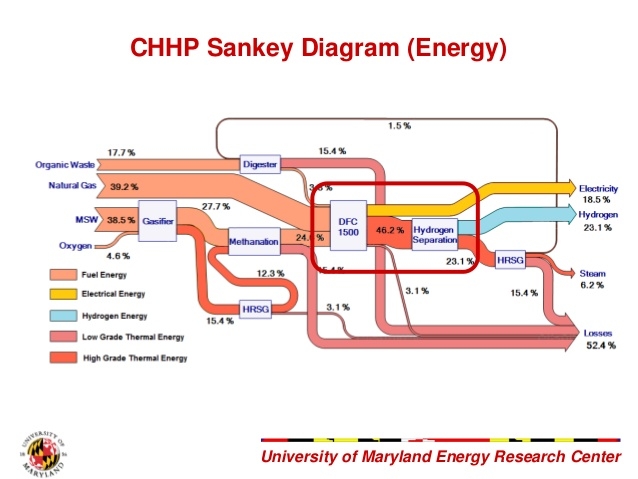A group of people from Idaho’s Office of Performance Evaluations, an independent agency of the state, have contributed a post to the AEA365 blog – A Tip-a-Day by and for Evaluators back in June 2014.
Rakesh Mohan, Lance McCleve, Tony Grange, Bryon Welch, and Margaret Campbell recommend Sankey diagrams as “A Cool Tool for Explaining the Complex Flow of Resources in Large Organizations”
“Communicating the flow of dollars was the trickiest piece of the study. We considered narratives, tables, and traditional flowcharts. Ultimately, we used Sankey diagrams that helped stakeholders visualize funds moving through the department making them the most useful features of our report.”
The Sankey diagram depicted shows Idaho state funds in FY2013. Although the absolute figures or the total sum are not shown in this figure, the diagram is most likely based on real budget data.

